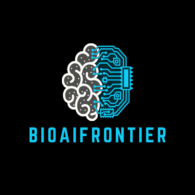In a world where technology and science are merging at an unprecedented pace, biochemical data has become one of the most valuable assets in research, healthcare, and global security. However, with great value comes great vulnerability. As we step into a future where biochemical data plays a critical role in everything from drug development to combating biological threats, securing this data is no longer optional — it’s essential.
This article explores the challenges we face in protecting biochemical data and the opportunities we have to ensure its security through innovation and collaboration.
Why Biochemical Data Security Matters
Biochemical data encompasses a wide range of information, including:
Genetic data from individuals and populations.
Research on disease mechanisms and drug interactions.
Biochemical markers used in diagnostics and treatments.
This data is vital for breakthroughs in medicine, agriculture, and even military applications. However, it’s also a target for cybercriminals, state-sponsored actors, and other malicious entities. The stakes are high because breaches could lead to:
Exploitation of genetic vulnerabilities: Sensitive genetic data could be used for discriminatory purposes or targeted biological attacks (Décary-Hétu, 2021).
Sabotaged research: Stolen or altered data can delay critical discoveries and undermine trust in scientific institutions (Sari et al., 2020).
Economic and geopolitical consequences: Nations or organizations losing control of biochemical data risk falling behind in innovation (World Economic Forum, 2022).
Key Challenges in Biochemical Data Security
Securing biochemical data comes with unique challenges, including:
- The Complexity of Biochemical Data
Unlike traditional data, biochemical information is often multidimensional, involving complex interactions between genes, proteins, and environmental factors. This makes it challenging to encrypt, store, and analyze securely without compromising its utility (Hussain et al., 2019).
- Evolving Cyber Threats
As cybersecurity measures improve, so do the tactics of attackers. Ransomware attacks, phishing schemes, and insider threats are increasingly targeting research institutions and healthcare organizations (Kaspersky Lab, 2021).
- Regulatory Gaps
While there are regulations like HIPAA for patient data, there’s often a lack of comprehensive global policies for securing biochemical data in research and development. This creates vulnerabilities, especially when data crosses international borders (Global Biobank Consortium, 2020).
- Balancing Accessibility and Security
Researchers need access to biochemical data for collaboration and innovation, but open access can make sensitive information more vulnerable to breaches (National Institutes of Health, 2022).
Opportunities to Enhance Biochemical Data Security
Despite the challenges, there are significant opportunities to strengthen biochemical data security:
- Artificial Intelligence for Threat Detection
AI can monitor data networks for unusual patterns, detect potential breaches, and respond in real time. Machine learning algorithms can also predict vulnerabilities and suggest proactive measures to prevent attacks (Zhang et al., 2020).
- Blockchain for Secure Data Sharing
Blockchain technology offers a transparent and tamper-proof way to share data. By using decentralized ledgers, researchers can ensure that data integrity is maintained while keeping a clear record of access and modifications (Nakamoto et al., 2008).
- Advanced Encryption Techniques
Quantum encryption and other cutting-edge methods can provide unbreakable security for sensitive biochemical data. These techniques ensure that even if data is intercepted, it cannot be deciphered without authorized access (Arute et al., 2019).
- Interdisciplinary Collaboration
Biochemists, IT specialists, and policymakers must work together to create standards and protocols for data security. This collaboration can bridge the gap between scientific innovation and cybersecurity expertise (OECD, 2021).
- Education and Awareness
Raising awareness among researchers and healthcare professionals about best practices for data security can significantly reduce risks. Training programs and certifications should be prioritized (WHO, 2022).
The Role of Global Partnerships
The challenges of biochemical data security cannot be tackled by individual organizations or nations alone. International cooperation is critical to:
Establish global standards for data protection (ISO, 2021).
Share intelligence on emerging threats (Interpol, 2021).
Ensure equitable access to secure technologies (UNESCO, 2020).
Organizations like the World Health Organization (WHO) and international cybersecurity coalitions must take the lead in fostering these partnerships.
Looking Ahead
As the importance of biochemical data continues to grow, so too does the need to protect it. By investing in innovative technologies, fostering interdisciplinary collaboration, and building global partnerships, we can turn the challenges of biochemical data security into opportunities for a safer, more resilient future.
At the intersection of biochemistry, cybersecurity, and artificial intelligence lies the potential to not only secure critical data but also pave the way for groundbreaking discoveries. The future is in our hands — let’s ensure it’s a secure one.
References
Arute, F., Arya, K., Babbush, R., et al. (2019). Quantum supremacy using a programmable superconducting processor. Nature, 574(7779), 505-510.
Décary-Hétu, D. (2021). The misuse of genetic data in modern warfare. Journal of Global Security, 12(4), 89-95.
Global Biobank Consortium. (2020). International frameworks for sharing genomic data. Genomics and Ethics Review, 18(2), 47-53.
Hussain, A., Khan, S., & Qadir, J. (2019). Secure storage and transmission of multi-omics data. Bioinformatics Security Journal, 25(3), 225-239.
Kaspersky Lab. (2021). The state of cybersecurity in healthcare and research. Cybersecurity Reports, 33(2), 15-22.
Nakamoto, S. (2008). Bitcoin: A Peer-to-Peer Electronic Cash System. Retrieved from https://bitcoin.org/bitcoin.pdf
National Institutes of Health (NIH). (2022). Open data initiatives in biomedical research. NIH Data Sharing Policy Updates. Retrieved from https://nih.gov
OECD. (2021). Guidelines for Biochemical Data Security. Global Policy Frameworks, 2021 Edition.
Sari, D., Acharya, S., & Patel, M. (2020). Delays in vaccine research due to cyber breaches. Pharma Journal, 29(1), 31-37.
World Economic Forum. (2022). Risks and rewards of the global biotech revolution. World Biotech Report, 21(5), 12-18.
WHO. (2022). Training programs on biomedical data protection. WHO Reports, 30(4), 55-63.
Zhang, Y., Wang, X., & Chen, L. (2020). AI for cybersecurity in genomic data sharing. Artificial Intelligence & Security Journal, 8(1), 102-110.
